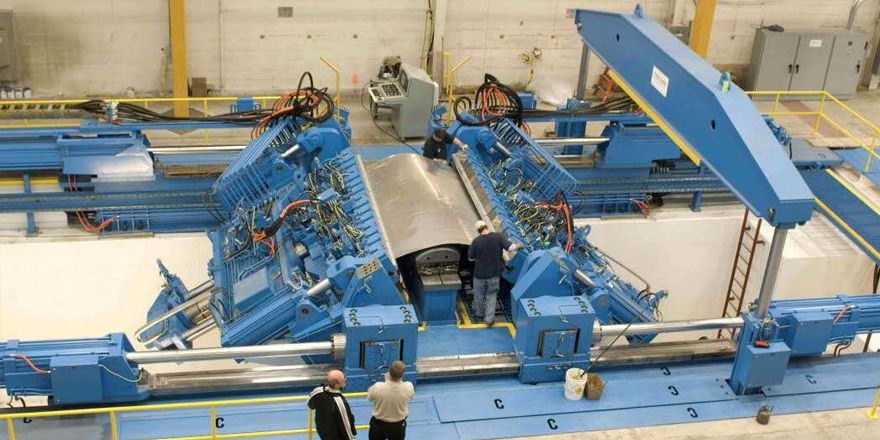Modernisation work is underway on pressing equipment at the Gagarin Aviation Plant in Komsomolsk-on-Amur. The goal is to expedite the production of fuselage skins for the MC-21 passenger aircraft. Previously, these components were manufactured in Ulyanovsk at the Aviastar plant, but production has now been transferred to the Far East.
Each skin requires a bespoke approach. Leonid Tolcheev, Deputy Chief Technologist, explains that such undertakings are infrequent, usually only occurring during the launch of new models. The last time something similar occurred was during the development of the “Superjet” eight years ago.
The complexity in mastering the process of forming the MC-21 skin blanks stemmed from the fact that KnAAZ and Aviastar employ presses with different kinematics. Consequently, the tooling – specifically the punches – that Aviastar passed on to Komsomolsk-on-Amur was unsuitable. The most challenging tasks were optimising the punch positions for the longitudinal stretch-forming press and developing control programs for the automated management of the forming process on the press.
Skin quality is critical. Permissible deviations are minimal, and achieving the required precision is only possible with specialised programs for the presses. The development of a single program of this type can take up to three months. For the MC-21, it was necessary to manufacture 16 large-scale skins.

Lead Engineer Anton Krivenok, from the Scientific and Production Centre, is capable of resolving problems of this calibre. The solutions devised enabled skin manufacture, but they were not the most efficient. Consequently, and owing to the tight deadlines for mastery, a contract was awarded to the engineering company “ITS”, which specialises in developing control programs for CNC press equipment.
“ITS” specialists prepared programs for six skins and proposed improvements to the forming technology. As Leonid Tolcheev noted, press operators and fitters from the machining and stamping shops played a significant role in the project’s execution.
During the course of the work, it was determined that one of the skins was unproducible. Engineers manually adjusted the punch position until a satisfactory result was achieved. “The mathematics suggested that it was impossible to make such a part on this press. We literally searched for the best punch position by feel, and we were successful – we empirically determined the optimum tooling position and produced the skin,” explained Leonid Tolcheev.
The United Aircraft Corporation (UAC) reported that, during the introduction of component manufacture for the Superjet 100 at KnAAZ, one of the problems successfully overcome by the plant’s engineers was the manufacture of fuselage skins and door surrounds. All are made from deformable aluminium alloys, but their manufacture requires two entirely different methods depending on the component’s shape.
“There are skins with single curvature. For example, a section of a cylinder or cone. Here, everything is relatively straightforward: first, the metal sheet is cut to the required dimensions and then deformed – rolled in a three-roll machine. This has three horizontally arranged rolls that rotate in different directions. These impart the required shape to the sheet,” explained UAC.
The manufacture of skins with double curvature is a complex process requiring a special approach owing to the multifaceted geometry. In the aerospace industry, the stretch-forming process is often used to create such components. First, the aluminium sheet is given a preliminary shape corresponding to the future component. The blank is then placed in a press with a punch – an element that precisely replicates the desired skin shape. The press, performing stretch forming, stretches the sheet, transforming it from a flat state into a three-dimensional component. During the stretching process, the blank closely conforms to the punch, assuming its shape.
A key success factor is achieving plastic deformation in all sections of the blank. The advantage of stretch forming over conventional bending lies in the creation of tensile stresses over the entire surface of the blank, which minimises the influence of elastic deformation.



